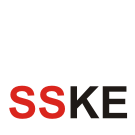From SSKE
(Difference between revisions)
(Created page with "<p style="text-align: justify">This course focuses on:</p> #understanding the company’s financial statements accounting information (balance sheet, income statement, cash...") |
|||
| (One intermediate revision by one user not shown) | |||
| Line 1: | Line 1: | ||
| + | <span style="font-size:large">[[SSKE Knowledge/isPartOfProgram::Service Engineering and Management (SEM) Master Program]]</span> | ||
| + | |||
| + | <span style="font-size:large">Accounting and Financial Management for Services</span> | ||
<p style="text-align: justify">This course focuses on:</p> | <p style="text-align: justify">This course focuses on:</p> | ||
#understanding the company’s financial statements accounting information (balance sheet, income statement, cash flow statement) and the tools of "window dressing" (creative accounting); | #understanding the company’s financial statements accounting information (balance sheet, income statement, cash flow statement) and the tools of "window dressing" (creative accounting); | ||
| Line 8: | Line 11: | ||
#understanding of company’s financial planning. | #understanding of company’s financial planning. | ||
<p style="text-align: justify"></p> | <p style="text-align: justify"></p> | ||
| + | |||
| + | [[SSKE Knowledge/isTaughtBy::Ciobanu, Anamaria| ]] | ||
| + | |||
| + | [[Category:SSKE Knowledge/University Course|SSKE_Knowledge/University_Course]] | ||
Latest revision as of 22:23, 18 May 2012
Service Engineering and Management (SEM) Master Program
Accounting and Financial Management for Services
This course focuses on:
- understanding the company’s financial statements accounting information (balance sheet, income statement, cash flow statement) and the tools of "window dressing" (creative accounting);
- understanding accounting information from the perspective of IAS (IFRS3, IAS 16, IAS 36, IAS 38);
- understanding of financial statements analysis;
- understanding of ratio analysis;
- understanding the risk –return trade-off and the impact on company’s value;
- understanding of cash budget and working capital management;
- understanding of company’s financial planning.



